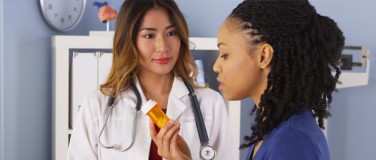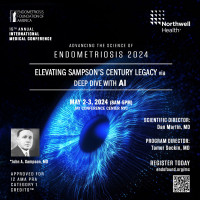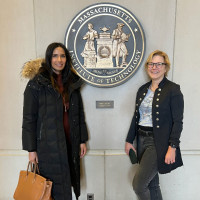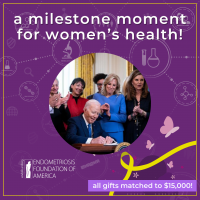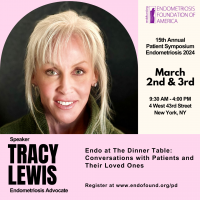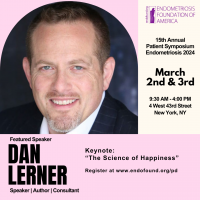
So far, research has not found a direct link between endometriosis and breast cancer. But both are increasingly common health concerns for women around the world. In the U.S., alone, one in every 10 women has endo. And the Centers for Disease Control and Prevention estimates 237,000 new breast cancer diagnoses for women each year.
Both conditions take a frighteningly high toll, physically and emotionally, not to mention the cost of health care.
Shared risk
The two conditions do share some risk factors. Rebecca Flyckt, MD, an OB-GYN at Cleveland Clinic, said some common risk factors between the two are infertility and nulliparity, or not having children, and an early first period.
A 2015 review published in Oncology Letters by Pontikaki, Sifakis, and Spandidos looked at much of the past research and found that, while an overlap does seem common, more needs to be learned about how one could impact the other.
The authors warned “new studies are urgently required” to look at the possible links between the two.
One study that looked at the data of 114,327 women in Denmark in an outpatient or hospital setting found that those diagnosed with endo before age 40 had a reduced risk of breast cancer. That’s the good news.
“Both breast cancer and endometriosis are relatively common, so there is some overlap between women who are diagnosed with both"
Unfortunately, those women diagnosed from 40 to 50 years old had a 14 percent higher risk for breast cancer. And women diagnosed at 50 years old, or older were more than two times more likely to develop breast cancer as women who did not have endo.
The need to understand breast cancer and its potential causes is clear. The American Cancer Society estimates that 40,920 women will die from breast cancer in the U.S. in 2018.
“Both breast cancer and endometriosis are relatively common, so there is some overlap between women who are diagnosed with both,” Dr. Flyckt adds. “To think carefully about treatments, it is most important to determine whether breast cancer is hormone-sensitive or not. Most of the available treatments for endometriosis are hormonal; therefore, women with hormone-sensitive breast cancers would not be candidates for hormonal regulation of their endometriosis.”
Fighting endo and breast cancer
This has been a reality for Los Angeles-based graphic designer Sonia Harris, 47. Like many women enduring endo, chronic pain has been a part of her life for as long as she can remember.
She says her periods were always “horrendously painful,” but was told this was normal. About 10 years ago, according to Harris, it got much worse. The pain would last for six continuous months. Her doctors prescribed opioids, but they caused extreme nausea, and she was vomiting three times a day. It was debilitating.
It got so bad she had to visit the ER frequently. Then, she changed doctors and was prescribed a hormonal treatment regimen—birth control pills—to suppress her periods.
But the pain didn’t completely disappear, and doctors told her it was purely psychological.
“It was demoralizing, says Harris, “to be treated as if I was mistaken about my own physical sensations.
“But after a lifetime of it, I was used to it,” Harris tells The Blossom.
“Exactly one year after my endometriosis excision [surgery], I felt a lump that was too big to ignore. A mammogram, ultrasound, and biopsy revealed it was Stage 3 breast cancer in my left breast, which had spread to the lymph nodes under the arm.”
She reached a point of desperation and was trying a new doctor a year, each time being prescribed hormonal birth control treatments.
Even when she asked if the pain was tied to endometriosis, she says her doctors dismissed her concern.
In 2014, the severe pain returned. After going from doctor to doctor, in 2015, she found a specialist to perform laparoscopic excision surgery to remove her endometriosis lesions.

An MRI revealed that her uterus was enlarged from scar tissue, giving her at least the welcome confirmation that the cause of her pain wasn’t all in her head.
But, her doctors decided to leave her ovaries intact—which, she says, was a mistake when she was diagnosed with estrogen-receptive breast cancer the following year.
“Exactly one year after my endometriosis excision [surgery], I felt a lump that was too big to ignore. A mammogram, ultrasound, and biopsy revealed it was Stage 3 breast cancer in my left breast, which had spread to the lymph nodes under the arm.”
Harris underwent a very tough nine months of treatment: chemotherapy, radiation, and a mastectomy. Up until a month ago, she was getting Lupron injections, a hormone suppressant therapy usually given to men for prostate cancer and women with endo. This was meant to stop her ovaries from producing estrogen to curb the estrogen-receptive cancer.
“The side effects of this were devastating,” she said. “They became progressively worse over the nine months I was taking Lupron. Originally, my endometriosis surgeon hadn’t wanted to remove my ovaries, so that I could go through menopause naturally, but now, it seemed sensible to remove them.”
She says she had read studies suggesting ovary removal could lead to a higher survival rate than Lupron alone. As she pondered her decision, she noticed her neuropathy, or weakness, numbness or nerve damage, usually in the hands and feet, had worsened so severely that she could barely hold a pen.
She was told, she says, this was a “normal side effect of menopause.”
Finally, she found a doctor who explained that a quick 15-minute laparoscopic oophorectomy would be the best way to free her of symptoms. Her ovaries were removed, and once she went off Lupron, her neuropathy and anxiety disappeared.
“A careful discussion with both the oncologist and gynecologist is required before embarking on any new endometriosis therapy in the setting of a breast cancer diagnosis”
Her excision surgery in 2015 was a success, and since then, she has been free of endometriosis symptoms.
“I am extremely thankful for this because the endometriosis had caused increasingly extreme food intolerances by the time it was finally treated,” Harris says. “If this hadn’t healed, I would have had a very difficult time keeping my weight up through chemo.”
Fear of breast cancer
Donna Hartt, 48, of Calgary, Alberta, Canada, wasn’t diagnosed with endometriosis until eight years ago. Like Harris, she had been living with pain since she was a young girl. She had her period early at the age of 11. By the time she was a teenager, she says she would spend days flat out on her back, reeling from the pain. An emergency hysterectomy revealed her uterus was stricken with adenomyosis.
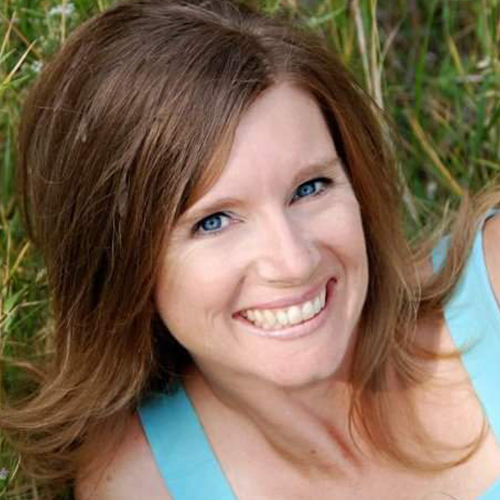
She thought she was finally through with her pain but woke up one morning last November feeling as though she was being stabbed in her side. An MRI revealed three ovarian cysts, two small masses, and signs of Deep Infiltrating Endometriosis.
“I thought I was cured. No one told me it could come back,” she says.
She also had a routine mammogram. A lump was found, and she was immediately put on breast cancer alert. Now, she must go for regular checkups every six months for the next two years.
“I had my results the other day, the lump is still present, but has not changed,” Hartt says. “I asked how this could have happened. I was told that the high estrogen found in women with endometriosis could be a sign for breast cancer.”
Right now, she’s fighting to have urgent laparoscopic excision surgery to remove the endo cysts.
She can’t go on hormone suppression therapies for endo because that will negatively impact her immune system, already compromised, and could be dangerous for someone at risk for breast cancer.
She says that removal of the ovaries has been recommended. And inducing the menopause is another surgical option for women with endometriosis, she adds.
“A careful discussion with both the oncologist and gynecologist is required before embarking on any new endometriosis therapy in the setting of a breast cancer diagnosis,” Dr. Flyckt stresses.
Learning from pain
Harris says one unexpected result of coping with endometriosis has been gaining the strength needed to fight cancer.
“In many ways, a lifetime of dealing with chronic pain on my own was great preparation for having cancer for a number of reasons,” she says.
“I know how to treat my body with food after years of eating strategically to reduce inflammation which taught me to be very sensitive to my body’s needs.
“Also, after years of dealing with doctors refusing to believe that endometriosis was real or could possibly be the cause of any pain or indigestion, I am well-versed in dealing with doctors who might not have my best interests at heart.
“I insist on better treatment, now. Learning to deal with pain for decades has given me a ton of tools to deal with the cancer treatment pain which is still healing. Meditation, yoga and other forms of gentle exercise have been a big help.”
Harris adds she wishes she had pushed back against the endo-naysayers at a younger age.
“It makes me sad that I spent most of my adult life believing the doctors who told me I wasn’t in pain and doubting my own physical sensations. I know I would not have ignored the lump in my breast for as long if I hadn’t been conditioned to doubt my own physical sensations,” Harris says.
“If I’m lucky, this cancer won’t kill me, but I can’t help mourning the life I could have had if I’d trusted my own feelings and got treatment for endometriosis pain decades ago.”



